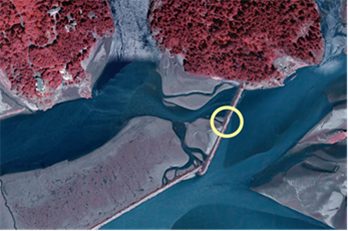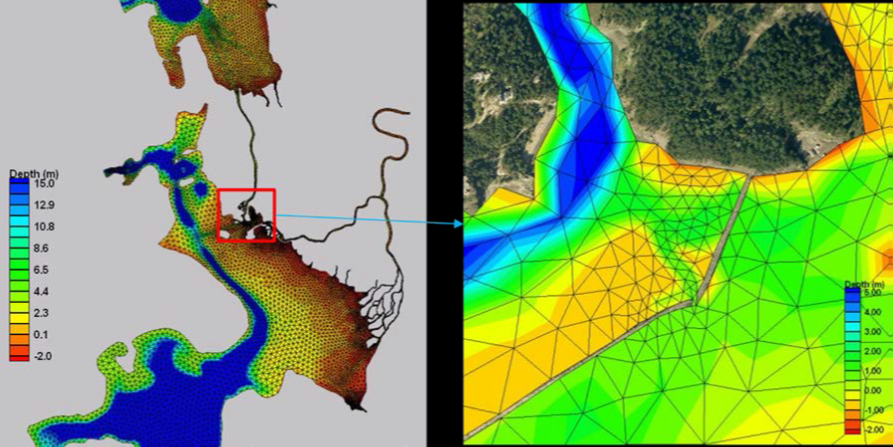SSM Habitat Restoration: McGlinn Island Causeway
McGlinn Island Causeway Habitat Restoration Feasibility Assessment

Dredging of the Swinomish Channel began in the 1890's to provide a navigation channel between Skagit Bay and Padilla Bay to facilitate commerce. Dredge spoils were used to build a causeway between LaConnor and McGlinn Island to prevent transport of sediments from entering the channel via Dunlop Bay. A jetty was built in 1938 to train the river away from the navigation channel, which further restricted connectivity between the river and the Swinomish Channel. The causeway and jetty have restricted juvenile salmonid access to prominent rearing habitat available in Padilla Bay and reduced freshwater input to the channel. This has greatly increased channel salinity and created a physiological barrier for juvenile Chinook salmon, which are very sensitive to high salinity. Restoring river-channel connectivity is necessary to allow juvenile salmon access to rearing habitat in Padilla Bay.
The overall objective of the McGlinn Island Causeway Feasibility study was to evaluate the potential of restoring historical connectivity between the North Fork Skagit River and the Swinomish Channel connecting Skagit and Padilla Bays. The objective of the associated PNNL modeling task was to conduct hydrodynamic simulation of the proposed restoration alternatives to assess whether expected benefits such as creation of brackish environment and desired level of connectivity for downstream fish migration could be achieved.

The hydrodynamic model of Skagit Bay, Swinomish Channel, and Padilla Bay was refined to include small-scale geometric features associated with the existing river training structures at the site, including the jetties and the dikes. The model reproduced the existing hydrodynamic condition and is being used to evaluate two alternative restoration concepts. Concept 1 involves lowering a river training jetty from McGlinn Island across the river channel. Concept 2 consists of creating a causeway and a dredged channel connecting the North Fork of the Skagit River to Swinomish Channel through Dunlop Bay.
Project Highlights
- Both alternative restoration concepts provide direct connectivity between the North Fork of the Skagit River and the Swinomish Channel allowing a migration pathway for juvenile Chinook salmon to Padilla Bay.
- The salinity reduction benefit was shown to be modest for both alternatives but reasonable considering that the analysis was conducted during low flow conditions.
- The impact of proposed alternatives on transported sediments and maintenance dredging requirements is being evaluated.
Contacts and Project Team
- PNNL: Tarang Khangaonkar (CO-PI), Zhaoqing Yang (CO-PI)
- Skagit River System Cooperative: Steve Hinton (PI)
Study Reports and Publications
Yang Z and T Khangaonkar. 2007. Hydrodynamic Modeling Analysis for McGlinn Island Causeway Feasibility Study. PNWD-3813, prepared for the Skagit River System Cooperative, by Battelle, Pacific Northwest Division, Richland, WA.
SRSC, Battelle PNNL, USGS. 2008. McGlinn Island Causeway & Jetty Habitat Restoration Feasibility Phase 1: Establishing the viability of hydraulic connectivity between Skagit and Padilla Bays. Skagit River System Cooperative, Laconnor, WA.